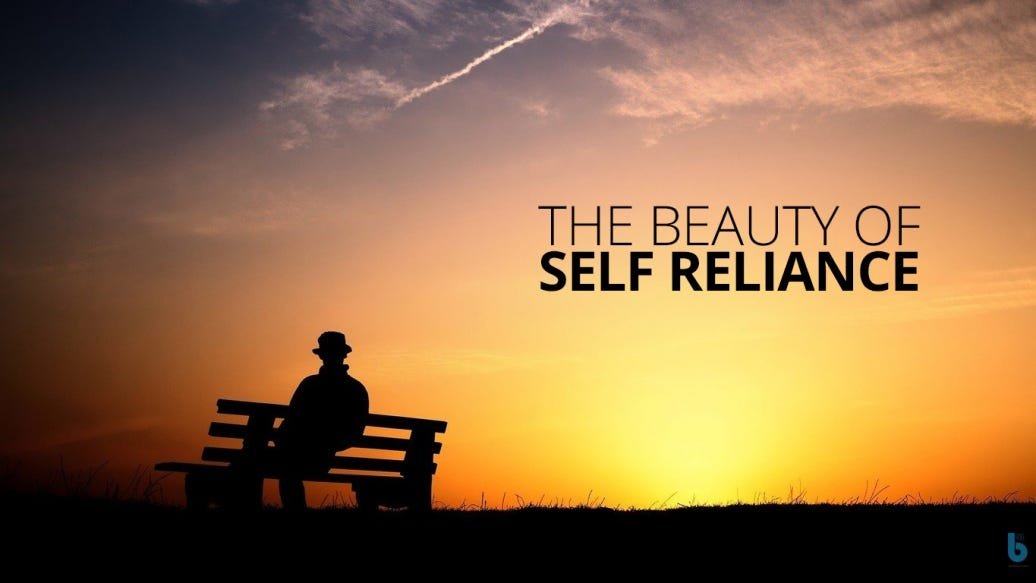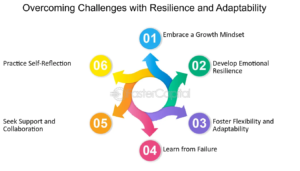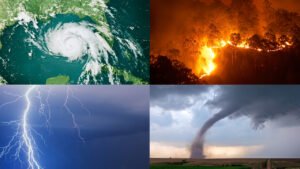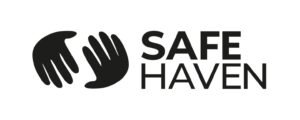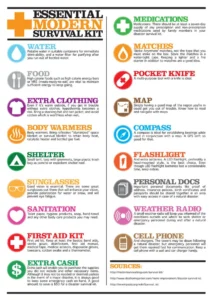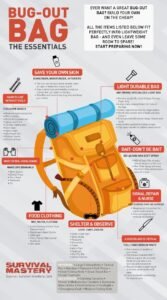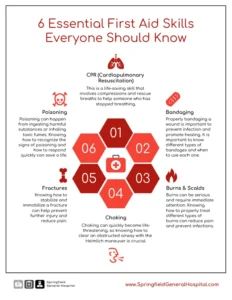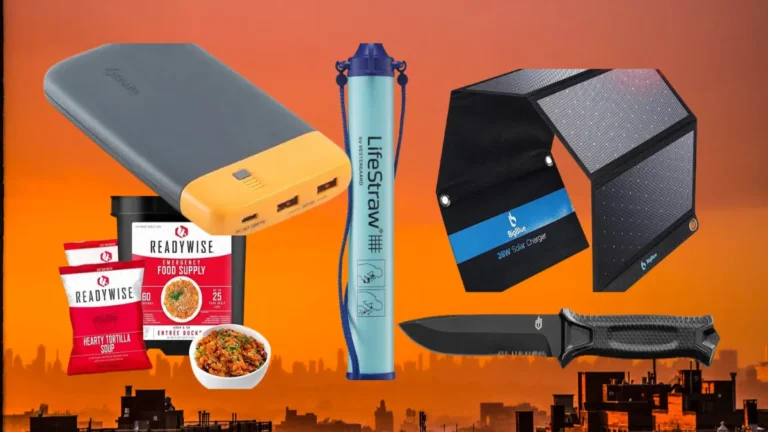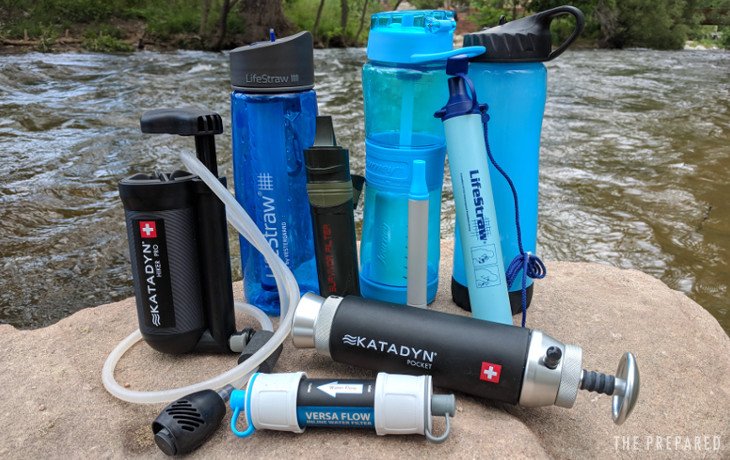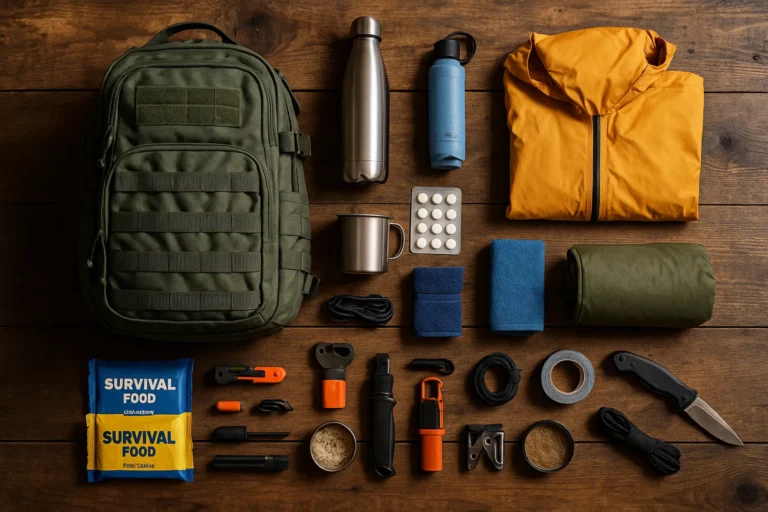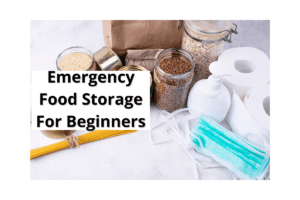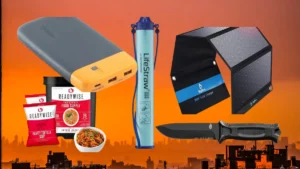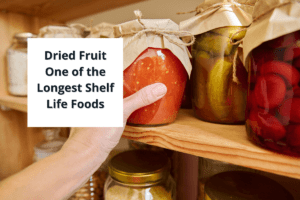Ever find yourself wondering what you’d do if disaster struck without warning? The thought alone can be unsettling. But what if you could take control and ensure that, no matter what happens, you and your loved ones are ready? That’s where self-reliance steps in, and it’s more crucial than you might think.
In today’s world, we can’t always depend on modern conveniences. Natural disasters, economic turmoil, and unforeseen emergencies remind us of the need to be prepared. Being self-reliant means having the skills, supplies, and mindset needed to handle these scenarios. It’s about taking proactive steps to ensure that, in a crisis, you’re not just hoping for aid—you’re equipped and confident to handle it yourselves.
This blog post dives into the art of preparing for such emergencies, guiding you on how to build an effective plan while minimising risk. It’s time to enhance your self-reliance and prioritise your safety and comfort during uncertain times.
Post Contents
ToggleUnderstanding Self-Reliance
When preparing for emergencies, one of the most empowering concepts you can embrace is self-reliance. Self-reliance means you have the skills, knowledge, and resources to take care of yourself and your loved ones, even when society is in chaos. In times of a natural disaster or a power outage, your preparedness and mentality to depend on yourself can make all the difference.
The Philosophy of Self-Reliance
The philosophy of self-reliance begins with the right mindset. It’s about being resilient, adaptable, and mentally prepared for whatever comes your way. But what exactly does this entail?
Think of self-reliance as developing an inner strength that doesn’t crumble in the face of adversity. It’s the foresight of a scout combined with the cool-headedness of a seasoned survivor. By embracing this mindset, you’re not just preparing for worst-case scenarios; you’re learning to thrive regardless of the situation.
Here are some aspects to cultivate:
Resilience: This isn’t just bouncing back from setbacks; it’s about coming back even stronger. Each challenge you face helps build your resilience. Reflect on past experiences during minor crises where you took charge and came out ahead.
Adaptability: Rigidity will not serve you well in a crisis. Adaptable individuals think on their feet and pivot as needed. If Plan A fails, are you ready with Plan B, C, and D?
Knowledge and Skill-Building: Never stop learning. Whether it’s learning how to purify water, grow your own food, or handle first aid during emergencies, knowledge increases your confidence and capability.
Taking these facets into account, ask yourself: Are you ready to shift your mindset and embrace a lifestyle of self-reliance?
In creating a lifestyle focused on self-reliance, you’re not just saving yourself. You’re potentially saving your family and even your community. It’s like a ripple effect — your preparedness benefits everyone around you. As you build your emergency supplies and devise your plans, keep the bigger picture in mind. Learn more from Fieldcraft Survival about embracing self-reliance.
No one knows exactly when or where the next emergency will strike, but through self-reliance we can be better prepared for whatever life throws our way.
Assessing Risks in Your Area
When it comes to prepping for emergencies, understanding the risks specific to your geographical location is one of the most vital steps. Knowledge is power, and by evaluating potential threats, you can establish self-reliance and ensure you are prepared for whatever Mother Nature throws your way. Let’s discuss some key factors to consider.
Identifying Potential Disasters
Different geographical areas are susceptible to different types of disasters. Knowing which ones are likely to occur in your region will guide you in your preparations.
Floods: Common in low-lying areas and regions close to rivers or coastlines. Essential preparations include:
- Elevating electrical appliances and utilities
- Building barriers to prevent water entry
- Having an emergency kit with waterproof essentials.
For more comprehensive preparedness tips, visit the Red Cross guide on floods.
Hurricanes: Predominantly affecting coastal regions, especially along the Gulf Coast and Atlantic seaboard. Preparation means:
- Securing your home with storm shutters
- Trimming trees and shrubs
- Preparing an evacuation plan and an emergency supply kit.
Learn in detail about hurricane readiness by referring to the U.S. Geological Survey information page.
Earthquakes: Common in areas near fault lines, such as California and Alaska. Important measures include:
- Securing heavy furniture and appliances
- Having an earthquake readiness plan with safe spots identified in your home
- Stocking up on food, water, and medical supplies.
A deeper understanding of earthquake preparedness can be found in the Adjusters International resource page.
Wildfires: Frequently occur in dry, wooded areas, particularly in the Western United States. Crucial steps for preparedness are:
- Creating a defensible space by clearing dry vegetation around your property
- Using fire-resistant building materials
- Having a go-bag ready if evacuation becomes necessary.
For advice on preventing wildfires, the detailed examples in this Physical Geography guide are beneficial.
Winter Storms: Affecting northern and central regions, preparation efforts should include:
- Insulating your home and pipes
- Keeping a supply of winter clothing and blankets
- Having a method of generating heat if power is lost.
For broader emergency responses to winter-related threats, FEMA provides an extensive unit guide on emergency management.
Natural disasters are unpredictable, but by assessing the risks in your area, you can take practical steps towards preparing effectively. Being proactive in your approach ensures that you, your family, and your home remain safe during any crisis.
Key Steps to Ensure Your Safe Haven
- Identify the Right Spot: The best safe havens are within your home or a pre-established location. Evaluate areas like basements, interior rooms, or secondary residences.
- Equip Your Haven: Stock up on essential supplies:
- Food Supplies: Think canned goods, dried meals, and snacks. Ensure a practical rotation system so nothing goes to waste.
- Water Reserves: Keep a generous stash of clean, drinkable water. Learn to purify and store water correctly as shown by CDC guidelines.
- First Aid Kit: In emergencies, there might be injuries. A fully equipped first aid kit is non-negotiable.
For further detail visit creating a safe haven during emergencies.
Setting up a safe haven not only keeps you physically safe but also provides a peace of mind knowing you are well-prepared for unexpected scenarios.
With these foundational steps, you’re on your way to a more assured and self-reliant future. Taking time to lay out a comprehensive emergency plan is an investment worth making. Keep reading to see how you can better organize and augment your supplies for maximal preparedness.
Building Your Emergency Supplies
When preparing for emergencies, having the right supplies can make a significant difference. Building an emergency supply kit that embodies self-reliance makes sure that you and your family are ready to handle unexpected situations with a sense of confidence and peace of mind. There is no one-size-fits-all solution, but there are essential items every kit should include, along with smart storage strategies to keep your supplies effective over time.
Essential Supplies for Self-Reliance
To ensure you’re ready for a range of scenarios, it’s vital to collect and maintain a robust stockpile of emergency supplies. Here are the must-have items for your kit:
- Water: Aim for at least one gallon of water per person per day, stored in sealed, clean containers. Remember, water isn’t just for drinking—you’ll need it for cooking and hygiene as well.
- Food: Non-perishable food items are the cornerstone of a good emergency kit. Think canned goods, dried fruits, pasta, and cereals. Don’t forget to include a manual can opener.
- First Aid Kit: A first aid kit should include items like bandages, antiseptic wipes, pain relief medication, and any necessary prescription medications. Consider additional medical supplies specific to your family’s needs.
- Emergency Blanket: These compact, foil-like blankets retain body heat and are invaluable in cold conditions.
- Multi-tool: A tool with pliers, knife, scissors, and screwdrivers.
- Flashlight and Extra Batteries: Choose wind-up or battery-powered flashlights.
- Radio: A battery-powered or hand-crank radio is essential for weather alerts and news if other communication channels fail.
- Personal Hygiene Items: Don’t forget essential hygiene items like soap, toothbrushes, and sanitation towelettes.
- Cash: In an emergency, ATMs might not work, so having some cash on hand is always a good idea.
- Clothing: Pack seasonal and thermal clothing to keep warm or cool, depending on your climate.
Building this kit might seem overwhelming initially, but start small. Add a few items each week, and soon you’ll have a comprehensive collection of supplies.
Storage Solutions and Maintenance
Just as important as having the right supplies is knowing how to store them properly. Here are some practical tips to ensure your emergency supplies remain effective for when you need them most:
1. Choose the Right Containers
Store items like food and water in airtight, durable containers to prevent spoilage and damage. Consider using plastic food storage containers or vacuum-sealed bags for optimal preservation.
2. Optimal Storage Locations
- Store supplies in a cool, dry place. Areas like basements or closets can be ideal, but ensure they are free from moisture and heat.
- Organise your items into logical groups. For instance, keep all your canned vegetables together, followed by fruits, nuts, and grains.
- Store water in FDA-approved, food-grade containers to avoid any contamination risks.
3. Regular Maintenance
- Rotate Items Regularly: Periodically check expiration dates and replace items as needed. For food, a good rule is to rotate your stock every six months.
- Check Seals and Integrity of Containers: Ensuring things like your water containers remain sealed and don’t develop leaks. This also applies to any vacuum-sealed food items.
- Test Equipment: Every few months, test items like flashlights and radios to make certain they work correctly, replacing batteries as needed.
For a step-by-step guide on maintaining your kit, check out this resource.
Being prepared is not just about amassing supplies; it’s about ensuring those supplies are viable when you need them. Proper storage and maintenance are key elements in making sure that your emergency preparedness plan is effective. This preparation will turn your home into a sanctuary able to weather any storm.
Training and Skills Development
Being prepared isn’t just about having the right supplies; it’s about having the right skills. Training in essential areas of survival can mean the difference between thriving and struggling in an emergency. Let’s dive into some critical skills that every prepper should work on and explore how to leverage community resources and support.
First Aid and Survival Skills
Mastering first aid and survival skills is crucial for any prepper. These skills ensure that you can handle medical emergencies and survive in challenging conditions without relying on modern conveniences. Here are some key skills you should focus on:
Basic First Aid: Knowing how to treat minor injuries, wounds, and perform CPR can save lives. Enroll in courses by reputable organisations like Red Cross that offer first aid and CPR certifications.
Wilderness Survival: Understanding how to find shelter, make fire, and source water in the wild are fundamental skills. Check out resources like The Prepared for comprehensive guides and training.
Navigation: Being able to read maps, use a compass, and understand the terrain are indispensable, especially if you have to relocate during a disaster.
Self-Defense: Basic self-defense can protect you from physical threats. Consider taking courses that teach practical techniques for personal safety.
By honing these skills, you increase your ability to remain self reliant, no matter the situation. Not only does this ensure your safety, but it also boosts your confidence in dealing with unforeseen challenges.
Community Resources and Support
In a post-disaster scenario, tapping into community resources can be a major advantage. Whether you’re seeking information, physical assistance, or moral support, local resources and communities play a pivotal role. Here’s how you can effectively utilise them:
Local Emergency Services: Become familiar with local emergency services and their capabilities. The FEMA website offers valuable resources on how to connect with community emergency preparedness efforts.
Community Watch Programs: Communities often have networks like neighbourhood watch programs that can provide assistance and information. Engage with these groups to stay informed and find mutual support in your locality.
Volunteer Organizations: Organisations like the American Red Cross offer courses and volunteer opportunities that can enhance your preparedness skills while contributing to community resilience.
Public Health Resources: Utilize resources from local public health departments for information on coping strategies and disaster response plans. Websites like the CDC offer comprehensive guides and checklists for community preparedness.
Preparing for emergencies by developing essential skills and leveraging community support ensures you are not only ready to face emergencies but also able to assist others, creating a stronger, more resilient community. Keeping these practices in mind will enhance your self-reliance and prepare you for any adversity with confidence.
Conclusion
Taking the route of self-reliance arms us with the necessary tools to face any disaster. By adopting consistent preparedness, we shield ourselves and our loved ones from the unforeseen.
Embrace the mindset of continuous preparedness and actively work on your plans. Gathering knowledge, building supplies, and staying informed will help ensure you’re ready for anything.
Commit to self-reliance and take control of your future today. When the unexpected strikes, being prepared will give you the confidence and security to weather any storm.
Check out some of the worlds best Water Purifier’s Below.

